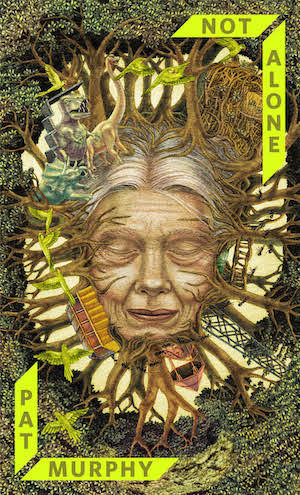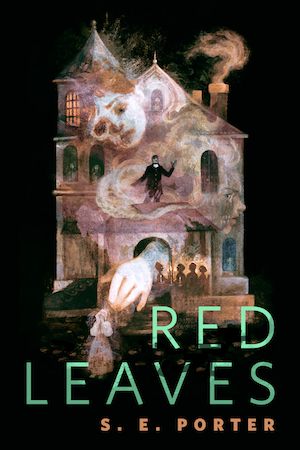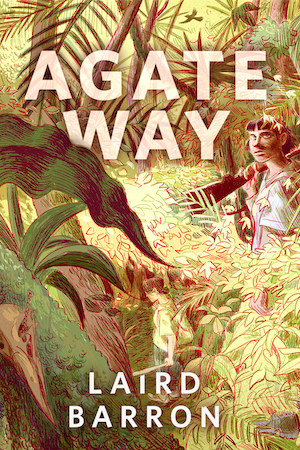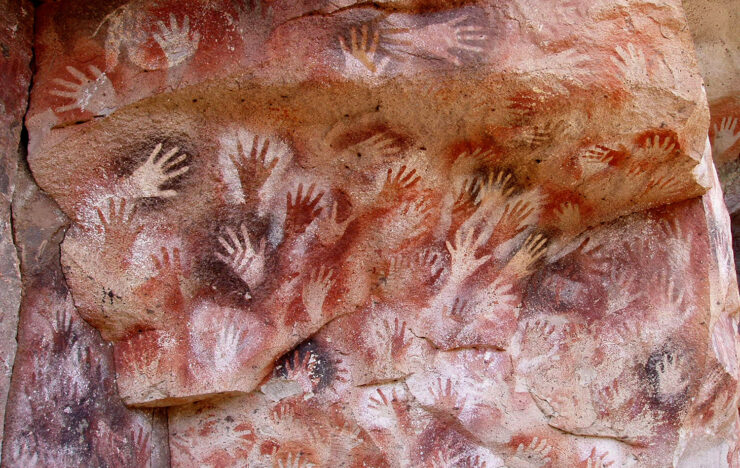You know where you are with stone tools. Or rather, scientists know where their ancestors were with stone tools, because stone tools are sufficiently durable that, with a bit of luck, the tools will outlast the species that made them.
Other technologies are not as considerate. We can only make an educated guess as to when clothing was adopted by comparing head and body lice, which became reproductively isolated from each other when humans started wearing clothes: 70,000 years ago, plus or minus about 40,000 years.
Sometimes, we can only infer the existence of certain technologies. For example, the oldest remains of a boat are those of the Pesse canoe, which only date back to circa 8040–7510 BCE, which is practically contemporary. However, humans reached Australia tens of millennia before the Pesse canoe was carved. There was no route from Eurasia to Australia, even when ocean levels were at their ice age lowest, that did not require crossing water. Therefore, the people who first reached Australia had boats or rafts or some similar technology.
Recently, as detailed in “Evidence for the earliest structural use of wood at least 476,000 years ago,” scientists reported evidence for the earliest structural use of wood at least 476,000 years ago. (The title is a spoiler, sorry.) This implies that wooden structures predate anatomically modern humans. By how much is unclear. It is just good luck that we found the evidence.
The fact that much of human and pre-human history is poorly known, and much of it lost entirely, is a tremendous advantage to writers. As long as they are careful to stay within the borders of what’s known—no dinosaur-hunting cavemen or vice versa—they are free to paint vivid portrayals of what probably wasn’t but might have been. Consider the five works that follow.
The Quest for Fire by J.-H. Rosny (1911)1
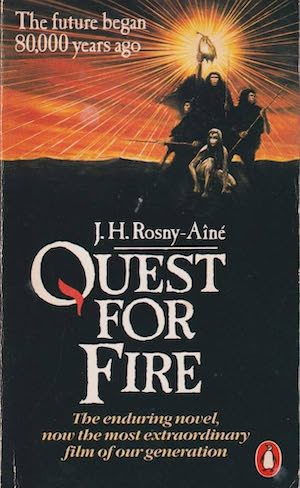
One hundred thousand years ago, Eurasia hosted several hominin species, species with varying degrees of intelligence and technological sophistication. The Oulhamr, for example, could use fire but could not build it from scratch (shavings, fire drill, or flint).
This technological gap causes a crisis when the tribe’s fire is extinguished. Naoh, Nam, and Gaw are dispatched to find a new source of fire, a quest that provides them with ample opportunity to encounter the other human species with which they share the continent. They find that few of the others are friendly.
Rosny’s fanciful speculations were not limited by the consensus model of human prehistory that was prevalent a century ago. Science marches on. Oddly enough, many of Rosny’s imaginary human species have parallels in hominin species discovered since the novel was published. This is not the way that fictional depictions of the distant past usually work.
Fire-Hunter by Jim Kjelgaard (1951)
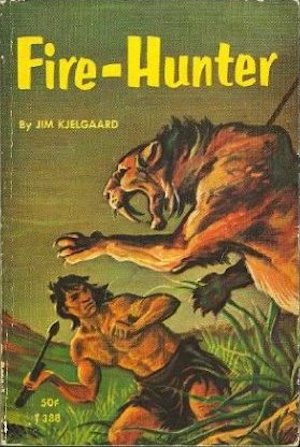
Expert spear-maker Hawk chafes under the tribal law that forbids a man in his position from hunting with the other men of his tribe. Hawk’s skills are too valuable to risk. Frustrated, Hawk invents a device that he believes will transform hunting. But his invention kills a hunter. Hawk is exiled from the tribe. He is accompanied by fellow exile and future mate Willow.
The pair manage to survive thanks to a flurry of Hawk inventions. In short order, Hawk invents the atlatl, light throwing spears, fletching, the bow and arrow, and the poisoned arrow, all of which come as a terrible (generally final) surprise to the animals and hostile humans who encounter Hawk and Willow. As for the pair’s former tribe? Alas, they do not prosper.
The above makes it sound like Willow does not do much. In fact, she plays a crucial role in domesticating dogs. She also invents waterproof baskets, which allow safer food storage. The book makes it clear that she is just as vital to the pair’s survival as Hawk. It’s also clear that Hawk will never deign to acknowledge this.
The Many-Colored Land by Julian May (1981)
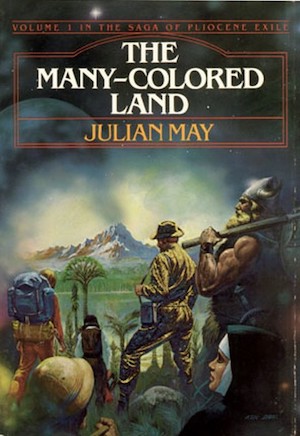
Théo Guderian’s discovery of a natural time portal reaching six million years into the past presents the future’s misfits with a way to escape. The one-way trip to the past delivers malcontents to a place far outside the Galactic Milieu’s oppressively utopian reach. What happens to them? The Galactic Milieu will never know, as all human relics of such a distant past will have left no trace.
To the exiles’ tremendous surprise, Earth six million years ago is home to advanced civilization, courtesy of alien refugees. Humans are welcome…as servants, slaves, and involuntary brood mares. Humans who fled six million years into the past to escape a benevolent government are hardly the sort to endure involuntary servitude. Thus, the question is not “will humans rebel?” but what form their rebellion will take.
One cannot help but be astonished by the Galactic Milieu’s acquiescence in the exile project. Sure, there’s some evidence suggesting that history is immutable but as William Tenn’s story “Brooklyn Project” demonstrates, it can be hard to notice how history has changed when one is part of that history.
The Steel of Raithskar by Vicki Ann Heydron and Randall Garrett (1981)
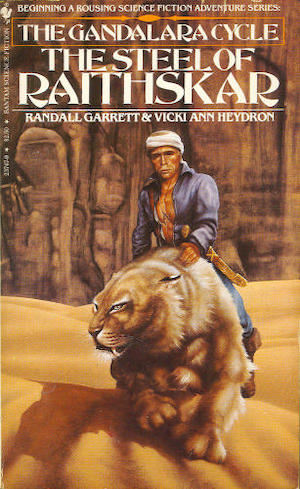
In this, the first of the Gandalara sword and sorcery fantasy series, terminally ill Richard Carillo’s mind is somehow transplanted into the brain-dead body of warrior Markasset. Markasset’s fellow Gandalarans are human-like but not Homo sapiens. Likewise, the relationship of Gandalara to the Earth that Richard knew is obscure.2
Richard has scarcely arrived when he discovers that his host’s father has been framed for a serious crime, with Markasset his likely accomplice. Preferring to avoid punishment for a crime he did not commit, Richard sets out to solve the crime. Whether he will survive his quest is unclear.
The series has a tragic backstory. It is credited to spouses Heydron and Garrett. However, early in the writing process Garrett was incapacitated by illness and spent the remainder of his life hospitalized (in a coma, according to some reports). Heydron therefore was forced to accomplish solo what was intended as a joint project.
The Clan of the Cave Bear by Jean M. Auel (1980)
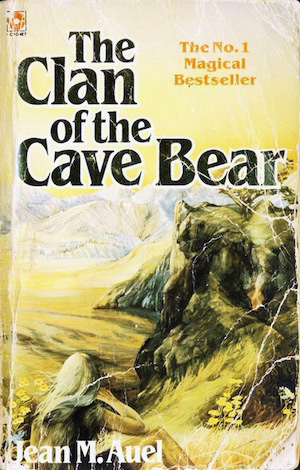
Orphaned by calamity, Cro-Magnon child Ayla encounters a Neanderthal clan.3 Despite the long-standing enmity between the Clan and the Others, the Neanderthals take pity on the child and adopt Ayla, raising her as one of their own. Or at least trying to.
Despite being closely related, the two species differ in physiology and behavior… not to mention psychic gifts of a sort not preserved by the fossil record. Ayla cannot access genetic memory, and thus must learn everything from scratch. However, because of this same lack, she is far more innovative than the extraordinarily conservative Clan. A clash is inevitable.
The imagined Neanderthal ability to access race memory isn’t all that different from the imagined Bene Gesserit ability to access forebearer memories. Auel is far more pessimistic than Herbert about the consequences of such an ability. That said, tensions are heightened because Ayla is unusually creative even for a human. Characters like Ayla and Hawk make one wonder why we didn’t have spacecraft by 10,000 BC.
***
This is, of course, a very small sample of the prehistoric tales that have been written. If you know of noteworthy efforts not mentioned above4, please mention them in comments below.
In the words of fanfiction author Musty181, four-time Hugo finalist, prolific book reviewer, and perennial Darwin Award nominee James Davis Nicoll “looks like a default mii with glasses.” His work has appeared in Interzone, Publishers Weekly and Romantic Times as well as on his own websites, James Nicoll Reviews (where he is assisted by editor Karen Lofstrom and web person Adrienne L. Travis) and the 2021, 2022, and 2023 Aurora Award finalist Young People Read Old SFF (where he is assisted by web person Adrienne L. Travis). His Patreon can be found here.
[1]Not to be confused with the 1981 film adaptation “Quest for Fire,” which differs in many ways from the book. The film is a marvel of austere costume budgets…although what they saved on costumes was no doubt spent on full-body makeup.
[2]As I recall, it took the entire seven-book series to reveal Gandalara’s exact relationship to our world. I won’t spoil it save to say there *is* a connection and there’s also a reason why it’s obscure.
[3]Consider this a content warning for sexual violence and a number of other issues, for those who have never encountered the book before.
[4]One work whose title I’ve forgotten involved the revelation that some extinct hominids could generate electric shocks like an electric eel, which, to put it mildly, seems rather unlikely.


